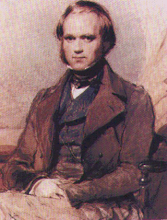
A 121-million-year-old fossilized bird embryo from China provides evidence that at some ancient chicks were able to care for themselves after hatching.
The China fossil bird is well-ossified, with nearly complete feathers and a large skull, indicating that the hatchling was able to walk and feed independently upon hatching.
Younger fossil bird embryos from 75 million-year old rocks in Argentina do not have feathers preserved. The difference between the China and Argentina embryos might indicate an evolutionary trend in hatchlings, from precocial to altricial in that 45 million year time span, or it may reflect preservation differences; Argentina embryos may have been at an earlier stage of development or had feathers that were not preserved.
It will take a few more discoveries of well-preserved fossil hatchlings to confirm the hypothesis.
Sources:
Science News 23 Oct. 2004, p. 166
Science Oct. 22, 2004 Zhonge Zhou and f.Zhang


No comments:
Post a Comment